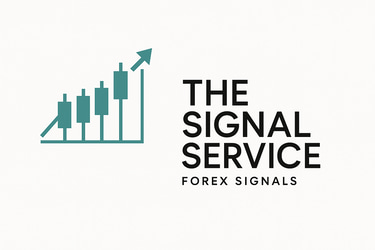
Understanding Currency Pairs and Market Correlations
A Comprehensive Guide for Traders
2/8/20254 min read


Introduction
In the world of forex trading, success hinges on understanding the basics—and that includes knowing how currency pairs work and how different markets move in relation to each other. Whether you’re a beginner or an experienced trader, gaining insight into currency pairs and market correlations can help you manage risk, diversify your portfolio, and refine your trading strategies.
This guide explains what currency pairs are, breaks down the concept of market correlations, and shows you how to use these insights to improve your forex trading performance.
1. What Are Currency Pairs?
In forex trading, currencies are quoted in pairs. Each currency pair represents the exchange rate between two currencies. The pair is divided into:
Base Currency: The first currency in the pair.
Quote Currency: The second currency, which indicates how much of this currency is needed to buy one unit of the base currency.
Types of Currency Pairs
Major Pairs:
These pairs include the most traded currencies worldwide (e.g., EUR/USD, USD/JPY, GBP/USD). They typically have tight spreads and high liquidity.Minor Pairs (Crosses):
Pairs that do not include the US dollar (e.g., EUR/GBP, AUD/NZD). They can be less liquid than majors but still offer solid trading opportunities.Exotic Pairs:
These pairs involve one major currency and one emerging market currency (e.g., USD/TRY, USD/ZAR). They tend to be more volatile with wider spreads.
Understanding the types of currency pairs available is crucial for selecting the right pair that fits your trading style and risk tolerance.
2. How to Read Currency Pairs
Reading currency pairs is straightforward once you grasp the concept:
Example: In EUR/USD, the euro (EUR) is the base currency and the US dollar (USD) is the quote currency. A quote of 1.1000 means 1 EUR is equivalent to 1.1000 USD.
Bid/Ask Prices:
The bid price is the price at which you can sell the base currency.
The ask price is the price at which you can buy the base currency.
This basic understanding helps you interpret price movements and determine potential entry and exit points in your trading strategy.
3. Market Correlations Explained
Market correlations refer to the relationship between two or more currency pairs or financial instruments. They help traders understand how the movement in one market may impact another.
Correlation Coefficient
Range: The correlation coefficient ranges from -1 to +1.
+1 (Positive Correlation): Two currency pairs move in the same direction.
-1 (Negative Correlation): Two currency pairs move in opposite directions.
0 (No Correlation): No discernible relationship between the pairs.
For example, the EUR/USD and GBP/USD often have a positive correlation because both pairs involve the US dollar as the quote currency. In contrast, USD/JPY might have a negative correlation with certain commodity currencies during risk-off market conditions.
4. The Importance of Understanding Market Correlations
Analyzing market correlations offers several benefits:
Risk Management:
Avoid placing multiple trades that are highly correlated, which can lead to overexposure if the market moves against you.Portfolio Diversification:
By understanding which currency pairs are correlated, you can diversify your trades to mitigate overall risk.Enhanced Decision-Making:
Correlation analysis provides insights into market behavior. For instance, if two pairs are positively correlated and one shows a strong trend, it might signal an opportunity in the other pair.Improved Trade Planning:
Knowing the relationship between different pairs helps you plan better, especially when economic events are expected to impact several markets simultaneously.
5. How to Use Currency Correlations in Your Trading Strategy
Integrating currency correlations into your trading plan can significantly enhance your strategy:
Avoid Redundant Positions:
If you’re already long on EUR/USD and see that GBP/USD is highly correlated, you might avoid taking a similar position in the latter to reduce risk.Hedge Your Positions:
Use negatively correlated pairs to hedge your portfolio. For example, if you’re exposed to a potential downturn in one market, a position in a negatively correlated pair might offset losses.Analyze Market Sentiment:
A correlation matrix can help you quickly gauge the overall market sentiment and adjust your positions accordingly.
Tools for Analyzing Correlations
Correlation Matrices:
Many forex platforms and third-party websites offer correlation matrices that display real-time relationships between multiple currency pairs.Trading Software:
Platforms like MetaTrader 4/5 and TradingView include tools and plugins that allow you to visualize and analyze market correlations.
By leveraging these tools, you can make more informed decisions, ultimately leading to a more resilient trading strategy.
6. Common Pitfalls in Correlation Analysis
While market correlations are a powerful tool, there are pitfalls to be aware of:
Changing Correlations:
Correlations are not static—they can shift over time due to economic changes, policy shifts, or unexpected events.Correlation vs. Causation:
A strong correlation does not necessarily mean that one pair is causing the movement in another. Always use correlation as one factor among many in your analysis.Over-Reliance on Tools:
While tools and matrices are useful, they should complement your broader market analysis rather than dictate your strategy.
Staying mindful of these factors ensures that you use correlation analysis effectively without falling into common traps.
Conclusion
Understanding currency pairs and market correlations is essential for any serious forex trader. By mastering these concepts, you can:
Improve Risk Management:
Avoid overexposure by recognizing correlated positions.Enhance Diversification:
Build a balanced trading portfolio.Make Informed Decisions:
Utilize correlations to gauge market sentiment and adjust your strategy accordingly.
For traders looking to take their strategies to the next level, incorporating advanced analytical tools and expert insights can make all the difference.
Ready to Optimize Your Trading Strategy?
At The Signal Service, we provide expert trading signals and market insights designed to help you navigate the complexities of the forex market. Whether you're refining your understanding of currency pairs or leveraging market correlations for better trade decisions, our comprehensive tools and 30-day free trial can give you the edge you need.
Trading
Expert forex signals for profitable trading strategies.
Disclaimer:
Trading forex involves significant risk and may not be suitable for all investors. Past performance is not indicative of future results. The information and signals provided on this website are for educational purposes only and should not be considered financial advice. You are solely responsible for your trading decisions and any resulting financial losses. Please consult with a licensed financial advisor before engaging in forex trading.
© 2025. All rights reserved.
